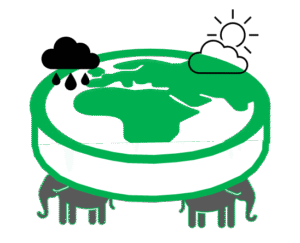
A crude attempt to dismiss climate science by saying “they do not have a clue” can be found in Reform’s Energy and Environment statement made in the lead up to the last general election.
This statement followed a disjointed series of misleading half-truths that present a laughably weak attempt to show present day climate change is entirely natural.
Scientific approaches don’t always get everything precisely right first time. But they do get things right far, far more often than opportunistic, ill-informed politicians waving wet fingers in the air. That’s because the ultimate authority in science is nature herself, as revealed by experiment and observation. When we get things wrong, nature puts us right.
Our understanding of the impact of carbon dioxide on climate is a textbook example of this scientific method at its best:-
- John Tyndall discovered, in the 1840s, that carbon dioxide absorbs radiated heat and hypothesised that this helps keep our planet warm.
- By the 1890s, Nobel-prize winning chemist Svante Arrhenius predicted how much warming a 50% increase in atmospheric carbon dioxide would produce.
- Twentieth and 21st century industrialization fly-tipped so much carbon dioxide into the atmosphere that concentrations actually did go up by 50% and the prediction could be tested.
- The temperature change was close to that predicted by Arrhenius.
Twentieth and twenty-first century climate science has refined Arrhenius’s work but nothing has been discovered which undermines it. This is robust science.
It’s not scientists who don’t know what they’re talking about.